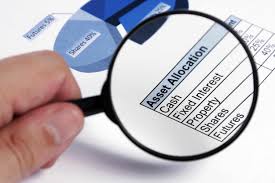When reviewing your investment portfolio, it’s important to consider a variety of asset classes to achieve diversification and manage risk. Here are some common asset classes to consider:
- Stocks (Equities): Stocks represent ownership in publicly traded companies. They offer the potential for capital appreciation and dividends. Stocks can be further classified into various categories, including large-cap, mid-cap, small-cap, domestic, international, and sector-specific stocks.
- Bonds (Fixed Income): Bonds are debt securities issued by governments, municipalities, and corporations. They provide regular interest payments (coupon payments) and return the principal amount at maturity. Bonds are generally considered lower risk compared to stocks and can provide income and stability to a portfolio.
- Cash and Cash Equivalents: Cash and cash equivalents include savings accounts, money market funds, and short-term Treasury bills. These assets provide liquidity and stability, but typically offer lower returns compared to other asset classes.
- Real Estate: Real estate investments can include direct ownership of properties (residential, commercial, or land), real estate investment trusts (REITs), or real estate crowdfunding platforms. Real estate can provide income through rental payments and the potential for capital appreciation.
- Commodities: Commodities include physical goods such as gold, silver, oil, natural gas, agricultural products, and industrial metals. Investing in commodities can provide diversification and act as a hedge against inflation, as their prices are influenced by supply and demand dynamics.
- Mutual Funds and Exchange-Traded Funds (ETFs): Mutual funds and ETFs pool money from multiple investors to invest in a diversified portfolio of assets. They offer exposure to various asset classes, sectors, and geographic regions, making them convenient options for diversification.
- Alternative Investments: Alternative investments include assets beyond traditional stocks and bonds, such as hedge funds, private equity, venture capital, real estate partnerships, and commodities futures. These investments may have unique risk-return profiles and offer potential diversification benefits.
- International Investments: Investing in international markets provides exposure to economies and companies outside of your home country. International investments can diversify your portfolio and potentially offer growth opportunities in different regions.
- Index Funds: Index funds track specific market indexes, such as the S&P 500 or the FTSE 100. These funds seek to replicate the performance of the underlying index and offer broad market exposure at relatively low costs.
- Cryptocurrencies: Cryptocurrencies like Bitcoin, Ethereum, and others have gained popularity as a digital asset class. Investing in cryptocurrencies carries unique risks and volatility and should be approached with caution and thorough understanding.
The specific asset classes you choose will depend on your investment goals, risk tolerance, and time horizon. It’s important to carefully assess each asset class’s characteristics, historical performance, and correlation with other assets to build a well-diversified portfolio that aligns with your investment objectives.
SHARE
